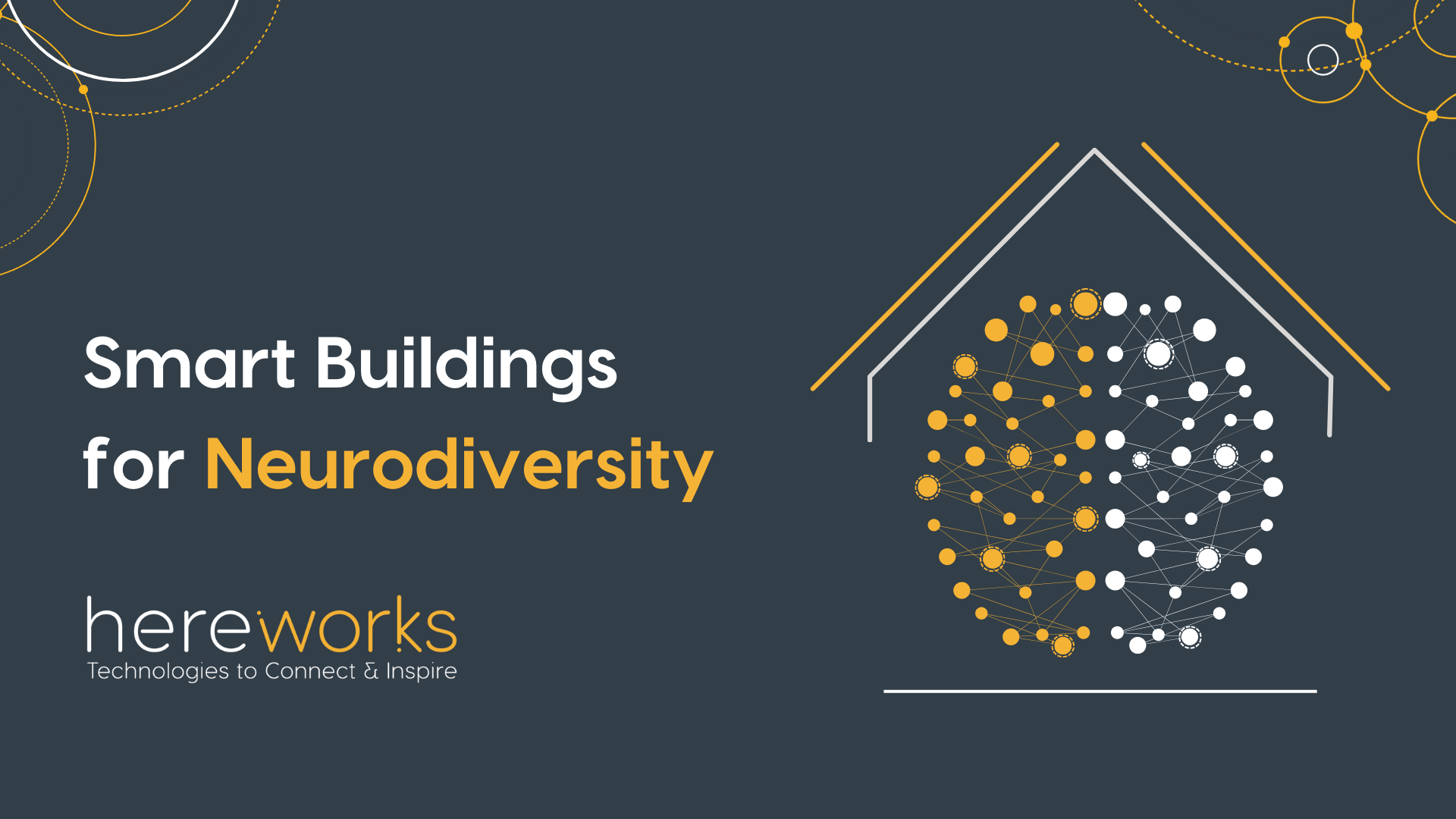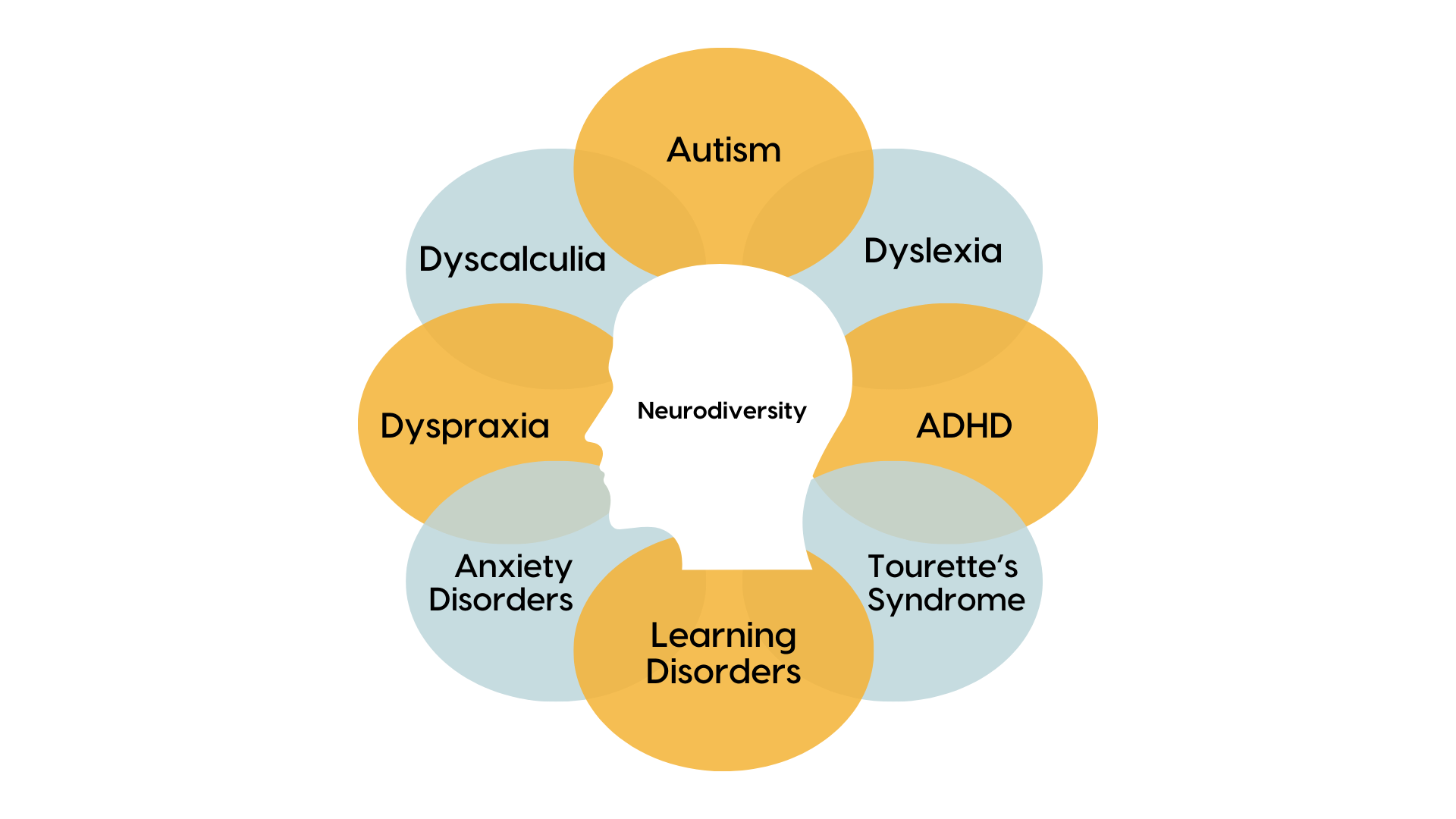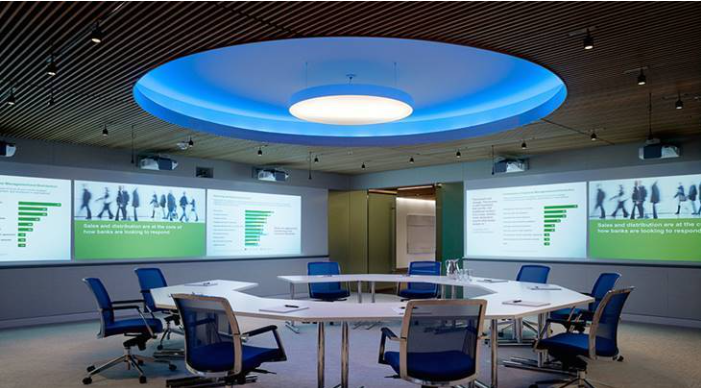Smart Buildings for Neurodiversity

December 14, 2023
Smart Buildings
It is reported that 1 in 10 people in Ireland and 1 in 7 people in the UK are neurodivergent. Looking at the UK alone, this means around 15% of the UK’s population is neurodivergent, equating to circa 5.6 million working-aged people. According to the UK’s Office for National Statistics, only 21.7% of neurodiverse people are employed, leaving a largely untapped talent pool of around 4.4 million people.
Many employees and HR departments are paving the way for more inclusive hiring strategies to gain access to this talent pool. In response, leaders in commercial real estate are looking at the environments in which the neurodiverse population are required to spend most of their working time. This aids in developing workplace strategies and designs to be more inclusive.

Neurological profiles are often collectively grouped as follows:
- Neurotypical (an individual not considered neurodivergent)
- Neurodivergent (an individual associated with neurological profiles such as those shown in the above figure)
- Neurodegenerative (an individual who may become associated with the above profiles over time through injury or neurological conditions)
When it comes to the physical built environment and the workplace, part of how the above manifests itself is through the ability of individuals within these neurological profiles to process sensory information and how sensitive they are to that sensory information.
Workplace strategies and designs being developed by leaders in this field consider the variance in sensory requirements. However, given current real estate strategies – which is seeing smaller, more flexible workspaces – dedicated spaces to meet these requirements come at a premium organisations can ill-afford.
How can a Smart Building and Hereworks Happy enable neurodiverse, inclusive workplaces?
Regarding workplaces, multiple environmental factors directly correlate to sensory input and the neurological profiles mentioned above. This article focuses on some of the most common sensory inputs at the forefront of workplace strategies, including:
- Indoor air quality (IAQ)
- Lighting
- Acoustics
- Décor
- Spatial awareness
The following high-level examples offer a glimpse into how Smart Buildings can empower a neurodiverse workforce.

Sensors
There are a magnitude of sensors on the market. These sensors can inform an organisation and individuals by providing real-time environmental data on IAQ, light levels and noise for any given space. Comparing sensor data to the BMS (Building Management Systems) platform and electrical and mechanical plant data can validate and, in most cases, improve the accuracy of this information. Analysis of this data (as well as other factors such as physical characteristics of spaces) provides powerful insights into the suitability of spaces. The building can anticipate user requirements through machine learning and AI (Artificial Intelligence). This allows the building to automatically action building systems (such as adjust lighting, temperature, and other environmental systems) to create a consistent and predictable environment. With the implementation of building-wide user experience apps, Smart Buildings can allow users to personalise the environment to accommodate their sensory preferences.
Asset Management
An asset management platform allows an organisation to manage assets within the workplace. This includes individual pieces of equipment through to entire spaces and rooms. Many of these platforms allow for the logging and tracking of key space characteristics, such as décor and available end-user technology (such as AV (Audio Visual) and IT). This allows users to book spaces and desks that meet individual needs. When this data is analysed with spatial analytic data, a Smart Building in its most basic form can provide flexible arrangements allowing users to choose the environment that best suits their needs. A true Smart Building can automatically allocate spaces based on those needs.
Spatial Analytics
Some of the leading space management platforms on the market allow users to book spaces and amenities, check the availability of meeting spaces and desks, provide and manage visitor access, track user journeys, report on space utilisation and recommend improvements. When this data is analysed alongside sensor data, Smart Buildings can ensure that they offer automated wayfinding that provides individuals with the best routes to meeting rooms, desks, or public spaces, avoiding distractions and overstimulating environments.
Automated Routines
Smart Buildings can automate aspects of their daily routines for individuals who require routines and experience the need to avoid the unknown. Spaces that meet an individual’s needs can be reserved and booked, workspaces can be set up, and the environment can be adjusted to suit. When integrated with wellness and health monitoring technologies, Smart Buildings can track stress levels, fatigue, or other factors, offering personalised suggestions for breaks or relaxation.

What does this mean for employers?
Whilst it is widely acknowledged that Smart Buildings can improve an organisation or building owner’s sustainability efforts and help achieve net carbon zero goals, the effect Smart Buildings have on humans is unprecedented.
With the correct data sets through Master System Integration, and with a powerful human-centric Smart Building software platform capable of machine learning with actionable outcomes, Smart Buildings can constantly gather data and feedback from its occupants, and proficiently analyse this data to provide meaningful insights into how the building is or can meet occupant’s requirements.
This data-driven approach allows manual and automated adjustments and enhancements to the workplace environment, ensuring that it supports neurodiverse individuals. It can contribute to a more inclusive and accommodating workplace that respects and celebrates neurodiversity, fostering a sense of belonging and well-being for all employees.
Smart Buildings will see improved performance from its occupants regarding productivity and creativity and enhanced wellbeing of its occupants. Smart Buildings enable a setting that enhances enjoyment, empowering occupants and providing a sense of control.
Smart Buildings will undoubtedly improve employee retention and attract new talent regardless of neurological profile.
At Hereworks, we believe in creating inclusive spaces that cater to the needs of everyone, including those who are neurodiverse. Our Hereworks Happy Score can help you find the perfect solution for your building that not only ensures 100% happiness but also creates a comfortable, productive, warm, engaged, secure, and healthy space for all.
Reach out to us today to discover our innovative solutions and discuss your specific needs.
Together we can transform your building into a smart, efficient and sustainable space.


.png)
.jpg)




%201.png)

